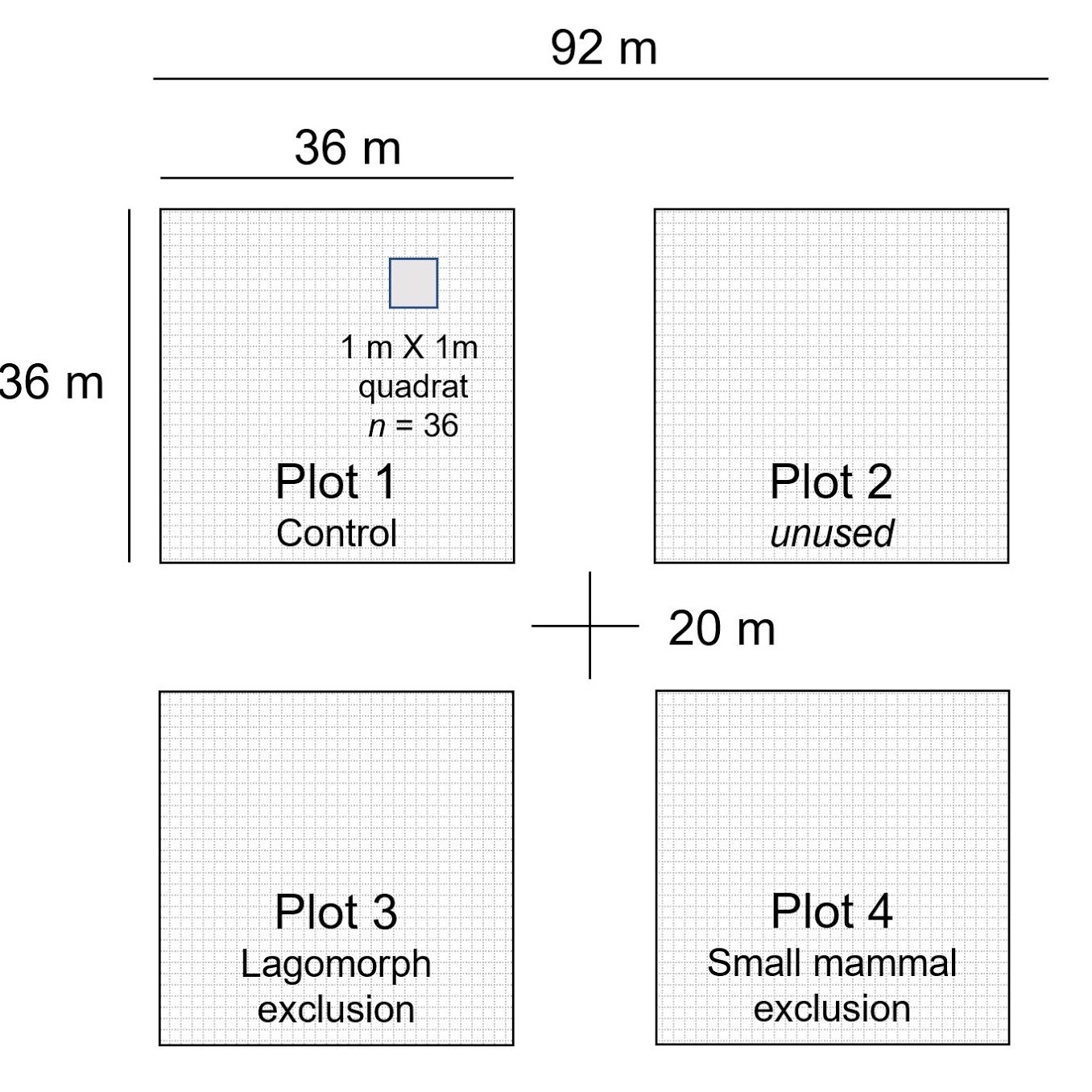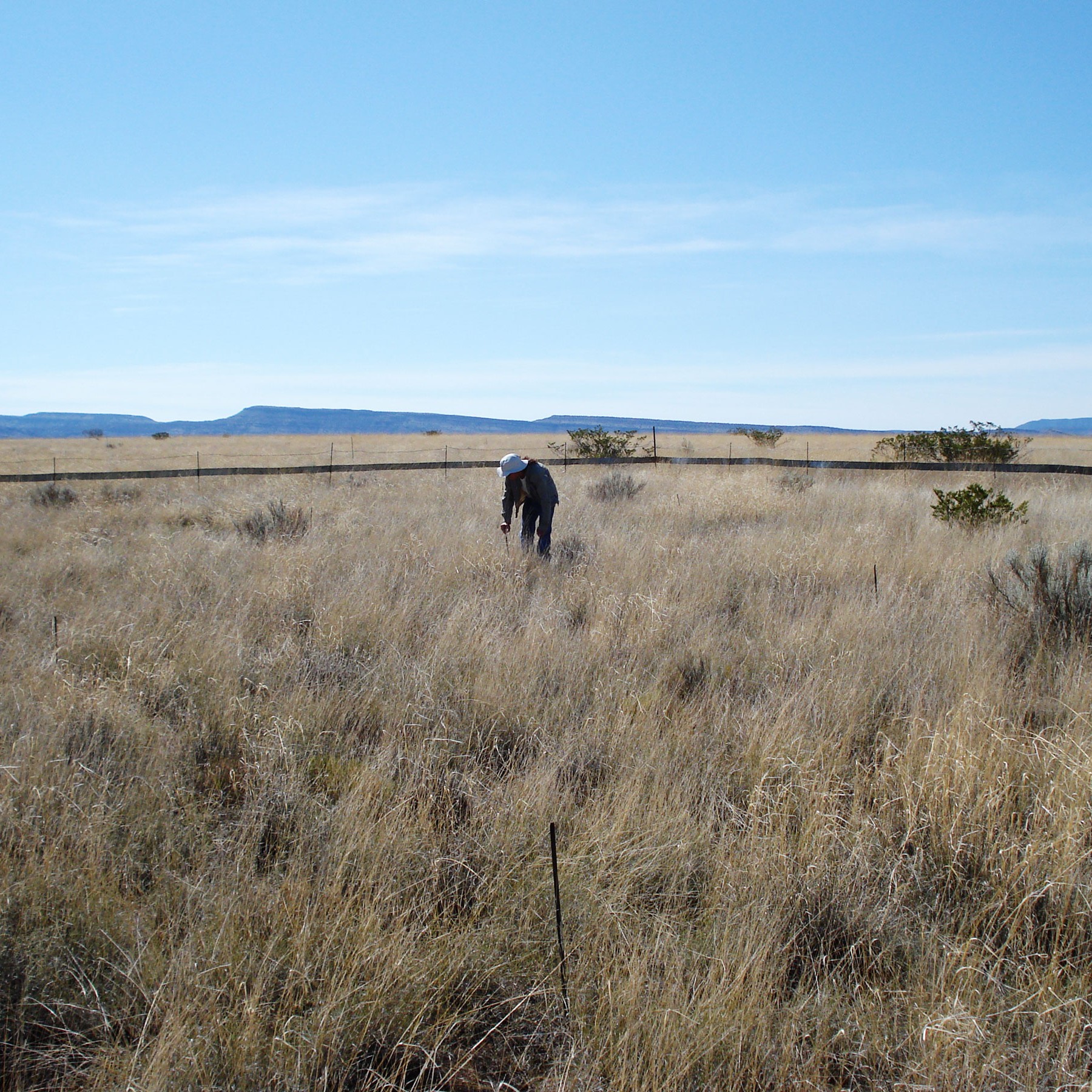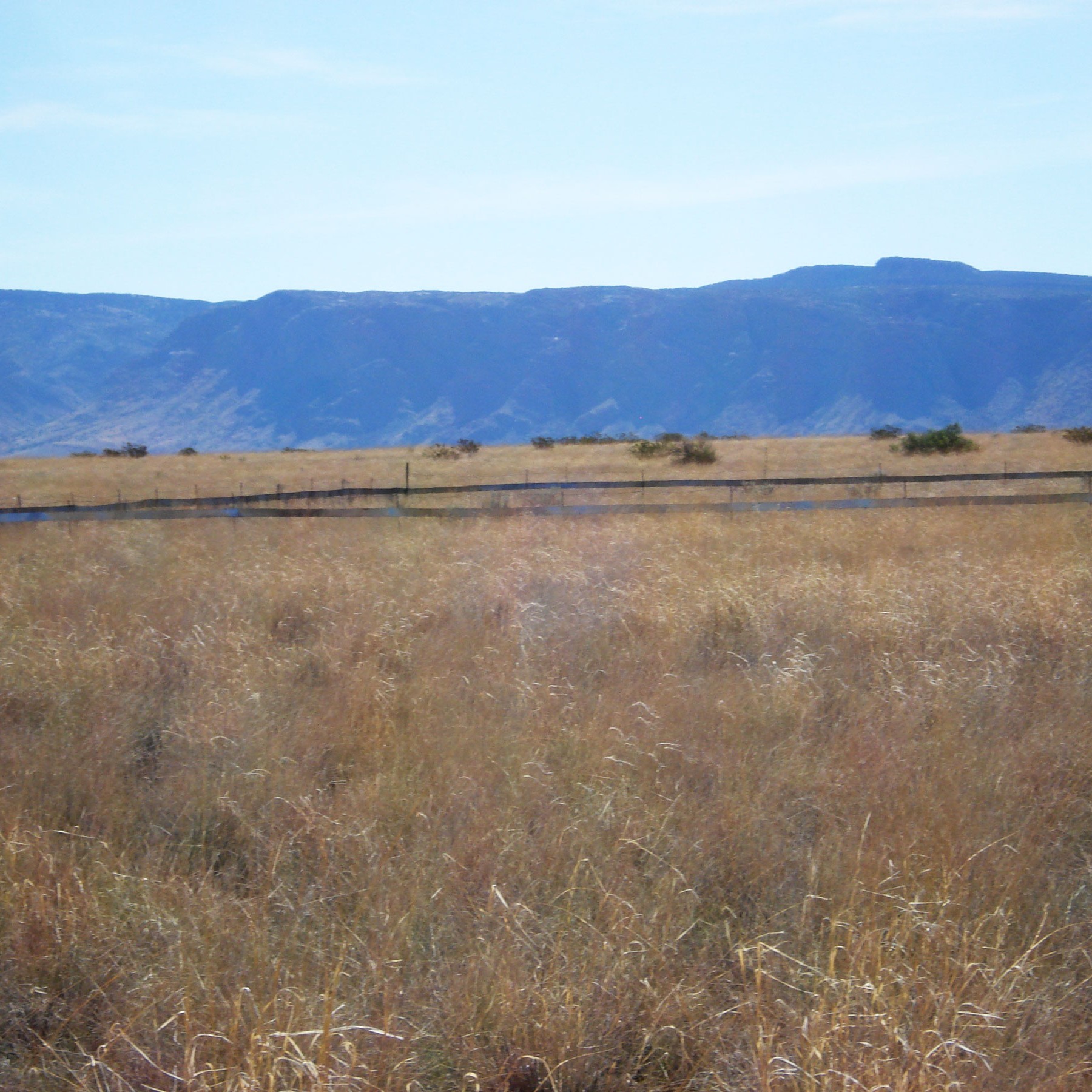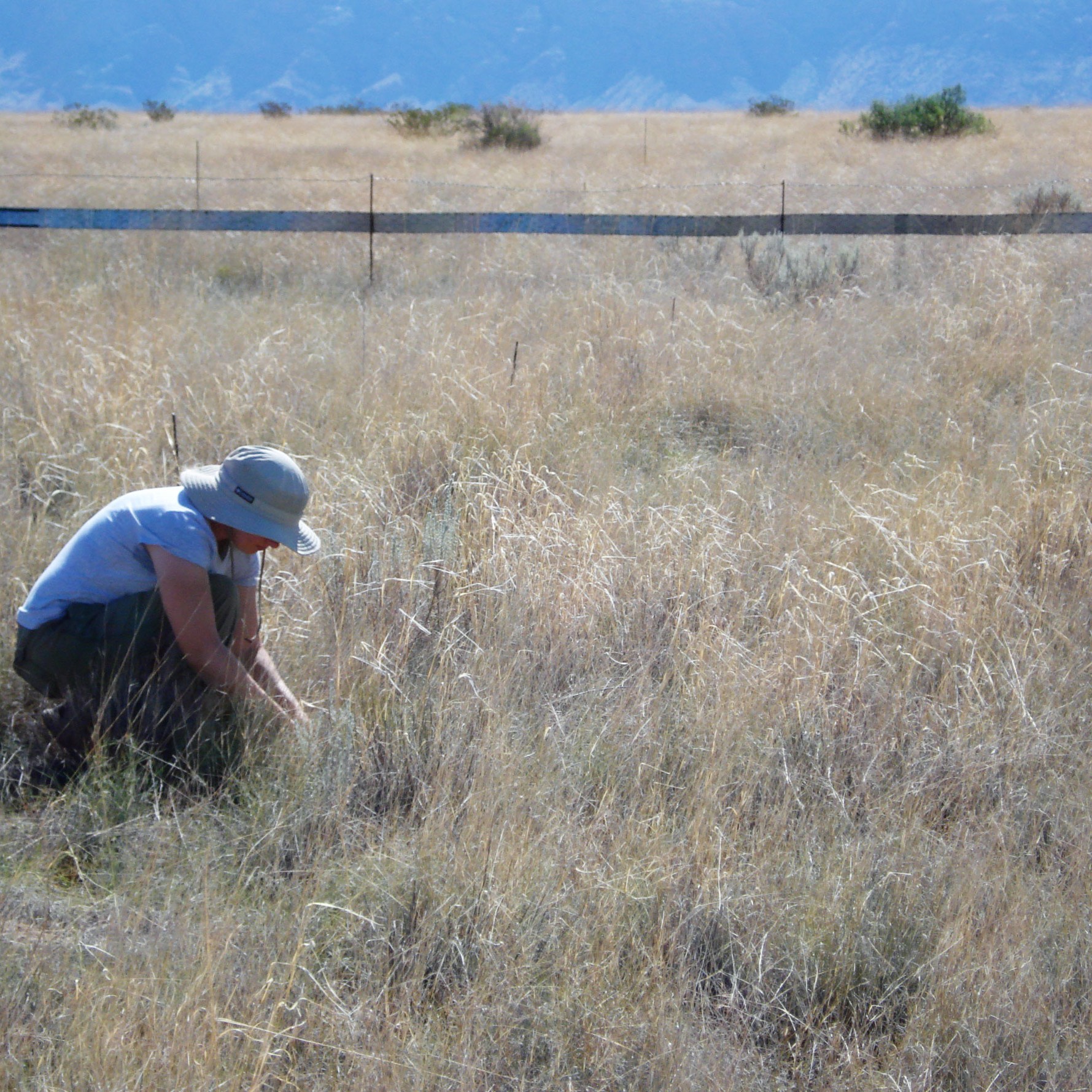Objective:
This experiment was designed to determine how much the presence of small mammals regulates plant community structure and spatial vegetation patterns in Chihuahuan Desert shrublands and grasslands. We have recently re-evaluated the results in conjunction with our new Sevilleta Plant Traits database to assess how mammal consumers influence plant community trait distributions and to understand how the influences of small mammals interact with climate to affect plant communities over time. This study provided a long-term experimental test of the role of consumers on ecosystem pattern and process.
Novelty:
Determining how climate affects biotic interactions can improve understanding of drivers of context dependency and inform predictions of how species interactions may influence plants under future climates. In dryland environments, the community and ecosystem-level impacts of small mammal seed predators may depend strongly on climate, yet long-term studies documenting impacts of rodents on plant communities over variable climate conditions remain scarce. With the exception of Jim Brown’s seminal work in the Chihuahuan Desert in Portal Arizona (https://portal.weecology.org/), we know of no other experimental studies longer than five years that have examined how exclusion of an entire small mammal community influences an intact plant community. As a result, the extent to which small mammals have long-term, sustained impacts on plant communities remains uncertain.
Design:
There were 2 study sites, the Five Points grassland site and the Rio Salado creosotebush site. Each study site was 1 km by 0.5 km in area. Three rodent trapping webs and four replicate experimental blocks of plots were randomly located at each study site to measure vegetation responses to the exclusion of small mammals. Each block was 92 m X 92 m and had four experimental plots (36 m X 36 m), each occupying 1/4 of the block. The four treatments within each block included one unfenced control plot (Treatment: C), one plot fenced with hardware cloth and poultry wire to exclude rodents and rabbits (Treatment: R), and one plot fenced only with poultry wire to exclude rabbits (Treatment: L). Each of the three plots in a replicate block were separated by 20 m. A grid of 36 sampling points was positioned at 5.8-meter intervals on a systematically located 6 by 6 point grid within each plot. A permanent 1 m X 1m vegetation quadrat was located at each of the 36 points with a 3 m wide buffer area situated between the grid of 36 points and the perimeter of each plot.
Responses:
Canopy area and maximum height of each plant species were measured from each 1 m x 1 m quadrat. We also measured vegetation along line transects, leaf litter, biocrusts, ants, termite casings, soil disturbances by specific animal taxa, and small mammal feces.
Key Datasets:
Small Mammal Exclosure Study (SMES) Vegetation Data from the Chihuahuan Desert Grassland and Shrubland at the Sevilleta National Wildlife Refuge, New Mexico (1995-2009). https://portal.edirepository.org/nis/mapbrowse?scope=knb-lter-sev&identifier=97
Small Mammal Exclosure Study (SMES) Surface Soil Disturbance in the Chihuahuan Desert Grassland and Shrubland at the Sevilleta National Wildlife Refuge, New Mexico (1995-2005). https://portal.edirepository.org/nis/mapbrowse?scope=knb-lter-sev&identifier=99
Small Mammal Exclosure Study (SMES) Vegetation Line Intercept from Chihuahuan Desert Grassland and Shrubland at the Sevilleta National Wildlife Refuge, New Mexico (1995-2005). https://portal.edirepository.org/nis/mapbrowse?scope=knb-lter-sev&identifier=95
Small Mammal Exclosure Study (SMES) Cryptogamic Crust Data from Chihuahuan Desert Grassland and Shrubland at the Sevilleta National Wildlife Refuge, New Mexico (1995-2005). https://portal.edirepository.org/nis/mapbrowse?scope=knb-lter-sev&identifier=94
Small Mammal Exclosure Study (SMES) Ant Data from Chihuahuan Desert Grassland and Shrubland at the Sevilleta National Wildlife Refuge, New Mexico (1995-2005). https://portal.edirepository.org/nis/mapbrowse?scope=knb-lter-sev&identifier=88
Publications:
Báez, S., S. L. Collins, D. Lightfoot, and T. L. Koontz. 2006. Bottom-up regulation of plant community structure in an aridland ecosystem. Ecology 87:2746–2754. https://doi.org/10.1890/0012-9658(2006)87[2746:bropcs]2.0.co;2
Maron, J. L., D. C. Lightfoot, M. A. Rodriguez-Cabal, S. L. Collins, and J. A. Rudgers. (pending revision). Long-term impacts of rodent exclusion on desert plant communities. Ecological Monographs.




